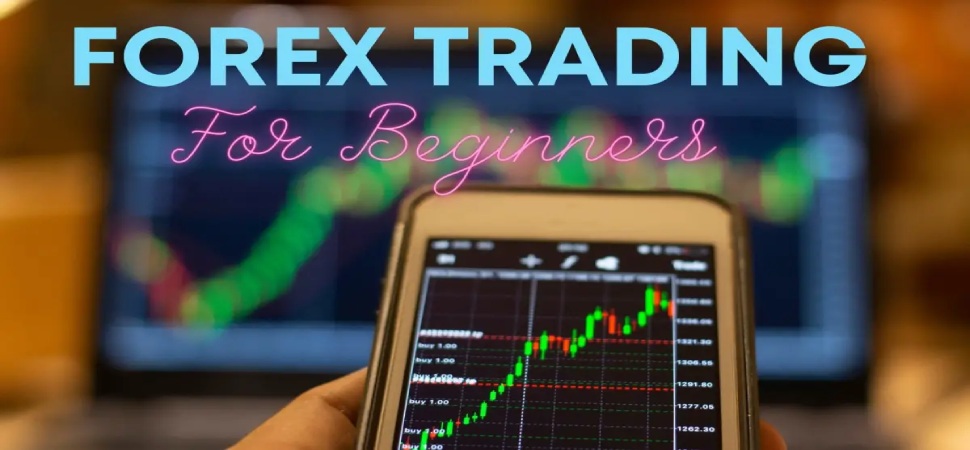08.04.2024
Евгений Лебедев
353

Forex trading is not an easy task, but it can be made easier if you choose the right Forex tools and methods. Trading is an exciting challenge for beginners - who wouldn't want to trade full-time and make money anywhere they have a stable internet connection?
However, trading in the financial markets is not for everyone as it is not easy and beginners face many pitfalls. But with the right Forex tools and knowledge, you can increase your chances of success. In this article, we will look at the best Forex tools, markets and methods for beginners and what to avoid.
Best Forex tools and markets for beginners
Major currency pairs
These currency pairs are often considered the best options for beginners. They include major currencies from around the world that are exchanged against the US dollar. These pairs are very liquid, so deposits and withdrawals are quick and easy. Spreads are usually low because trading volumes are high.
The main currency pairs are
- EUR/USD;
- GBP/USD;
- AUD/USD;
- USD/JPY and others.
Tips for Professional Traders. Being the largest economy in the world, the US dollar is the most global currency and therefore the most global economy. This means that there is always a lot of information available when trading. The dollar is also a safe haven, meaning that when markets fluctuate, investors' money flows into the dollar. For example, geopolitical instability can cause the dollar to rise.
Less volatile currency pairs
This group includes a number of currency pairs that do not include the U.S. dollar but are considered relatively stable. These currency pairs tend to move more slowly, but can still offer good opportunities. Low volatility means low risk, which makes them suitable for beginners as they do not require much mental effort on the part of the trader.
Such currency pairs include.
- EUR/GBP;
- AUD/NZD.
Currency pairs with strong fundamentals
Currency pairs whose rates are influenced by clear and notable economic events such as interest rate decisions, employment reports, inflation or economic growth may have more predictable behavior.
Currency pairs with a clear trend structure
Trend-following strategies are usually easier to recognize and provide higher returns, so it is a good idea for beginners to look for currency pairs with a clear trend structure. Beginners should trade in the direction of the trend, as trading in the direction of a confirmed trend is more likely to be successful than trading against the trend.
It is recommended to look for trends with a longer timeframe (weekly or daily).
Specific commodities
Gold can be a good commodity for beginners. Gold has an inverse correlation with the US dollar - usually when the dollar is strong, gold is weak, and vice versa. But at the same time, gold offers decent yields. However, gold's somewhat high volatility can be a bit risky for beginners, so it is recommended to trade gold in small positions and remember that in this case, less is more.
S&P 500 stock index
When it comes to stock indices, the S&P 500 index can be a good Forex tool for beginners. For example, this index is less volatile than the Nasdaq index, but at the same time, there is a high correlation between them, which you can use to your advantage.
Tip for professional traders. When the VIX index goes down, the S&P 500 index tends to go up, and vice versa. You can find the VIX index as a futures product on your trading platform and use it to analyze the S&P 500 index.
Exotic currency pairs
Exotic currency pairs include the currencies of less developed countries. They can be volatile and have wide price spreads, which can increase trading costs. They are also less liquid, which can cause delays in trading.
Exotic currency pairs include
- USD/SGD;
- USD/HKD;
- EUR/TRY.
High volatility currency pairs
Volatility is an attractive Forex tool for some traders because it gives them the opportunity to make quick and large profits, but without knowledge of the market and its fundamentals, risk management and psychological control, trading volatile currency pairs can be risky. One of such currency pairs is GBP/JPY, which is nicknamed "the widower" for a reason.
Volatile stock indices
For example, DAX or US 100 indices are very volatile at the moment of market opening, which makes it difficult to predict their further movement. Experienced traders take advantage of this volatility to make quick scalping trades within seconds. However, scalping requires a lot of mental effort from the trader, which makes it unsuitable for beginners.
High Leverage Trading
Leverage allows you to trade with more money than you have in your account. This is attractive for beginners as it can increase your profits. However, it can also lead to large losses, so beginners should be very careful when using leverage as it can lead to large financial losses. More important than leverage is risk management, which is how large a position a trader is willing to take in each trade.
Complex trading strategies
If you are new to Forex trading, you should avoid complex trading strategies for a very short period of time. Scalping and intraday strategies require an understanding of the market situation and a lot of experience, so it is better to start with simple strategies for a longer period of time. It is usually recommended to choose a swing strategy and trade a single position for a few days. From this position, you can observe the market and gradually learn to move to shorter timeframes and more complex procedures.

Other useful tips for beginners
Start with a demo account
A demo account allows you to gain experience trading currencies without the risk of losing real money. With a demo account, you can learn how to use the platform and test your strategies. However, to get the most out of a demo account, you need to use it in the same way as a real account.
The main disadvantage of a demo account is that you cannot experience the thrill of real trading and you should always keep this in mind. Also, don't forget that a demo account has some limitations, for example, it doesn't have slippage during trading like a real account. Keep this in mind when testing your chosen strategy and avoid trading with such limitations.
Switching to a live account
Most beginners make the mistake of moving too quickly to a live account without developing a solid trading strategy. The combination of uncertainty caused by an untested strategy and uncontrolled emotions such as fear and greed always leads to losses. It is best to test your trading strategy on a demo account before opening a real account.
If you have a real account, start with small positions (preferably micro positions). Remember that you may be surprised by the emotions you experience in a real account. Also, emotions are less pronounced in a small account than in a large one.
Create a trading plan and diary
Decide which signals you will use, which markets to trade and which methods to use, and write them down. Then follow this plan and test it on demo and live accounts.
You should also record your trades in a trading journal to get feedback and constantly improve. In your trading journal, you can record not only the charts you use to trade, but also the factors that affect your trades, such as the emotions you feel while trading.
Risk management is important
Your trading plan should include the risk you are willing to take on each trade and the risk/reward ratio you are trying to achieve. Use stop loss orders to limit potential losses. Don't keep more money in your account than you can afford to lose. Keep up with the latest news and economic analysis. Understanding the factors affecting the market will help you make smarter investment decisions.
